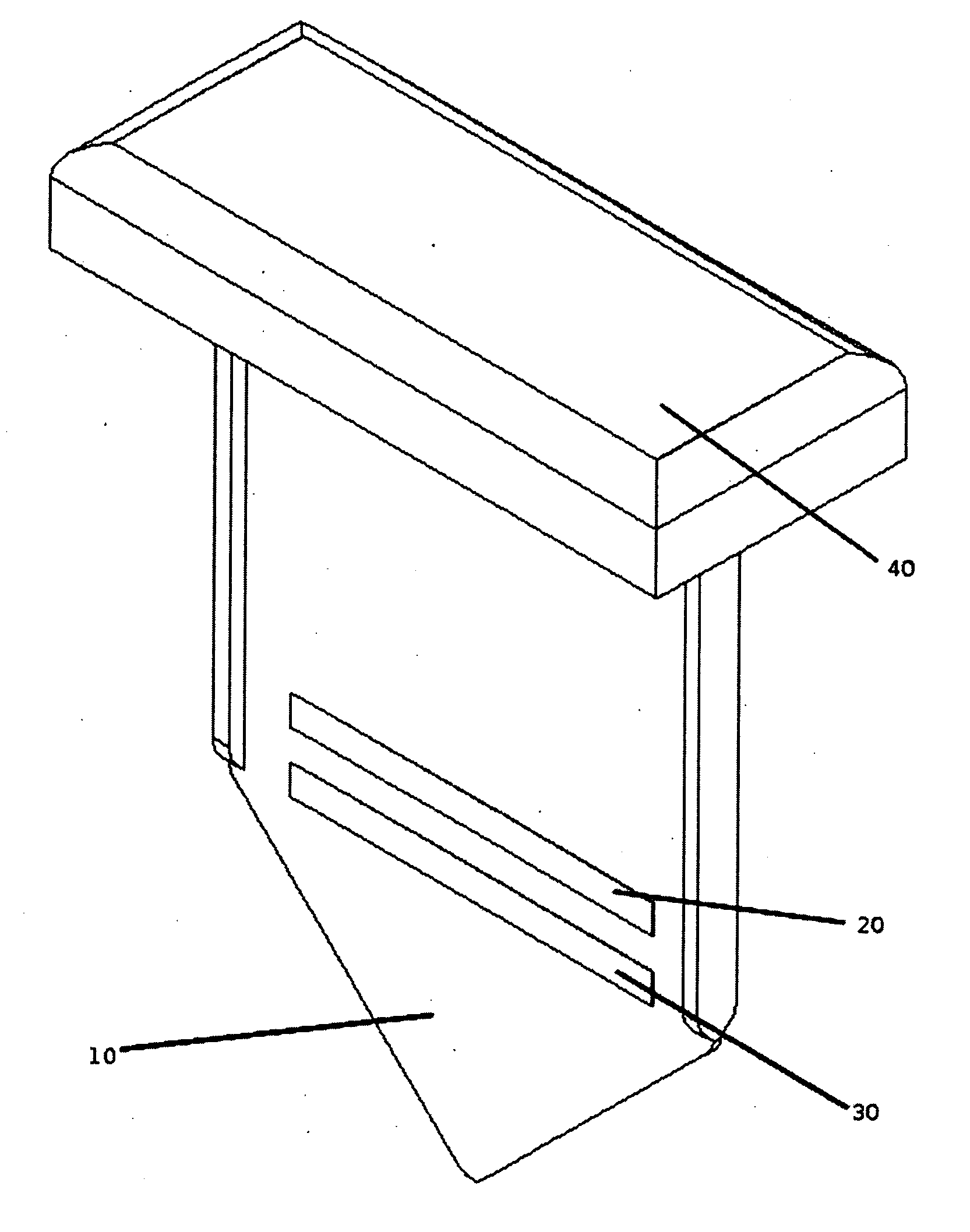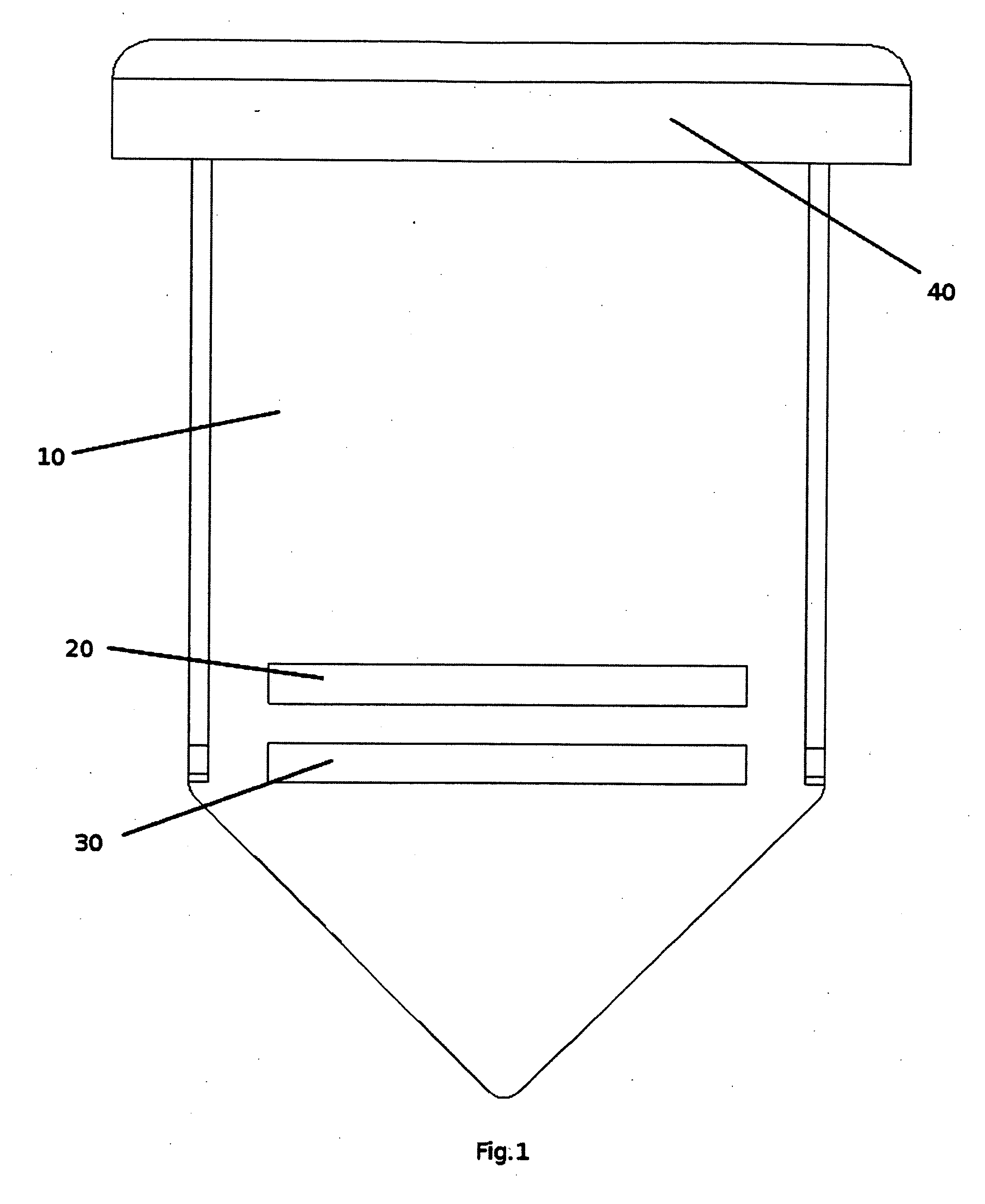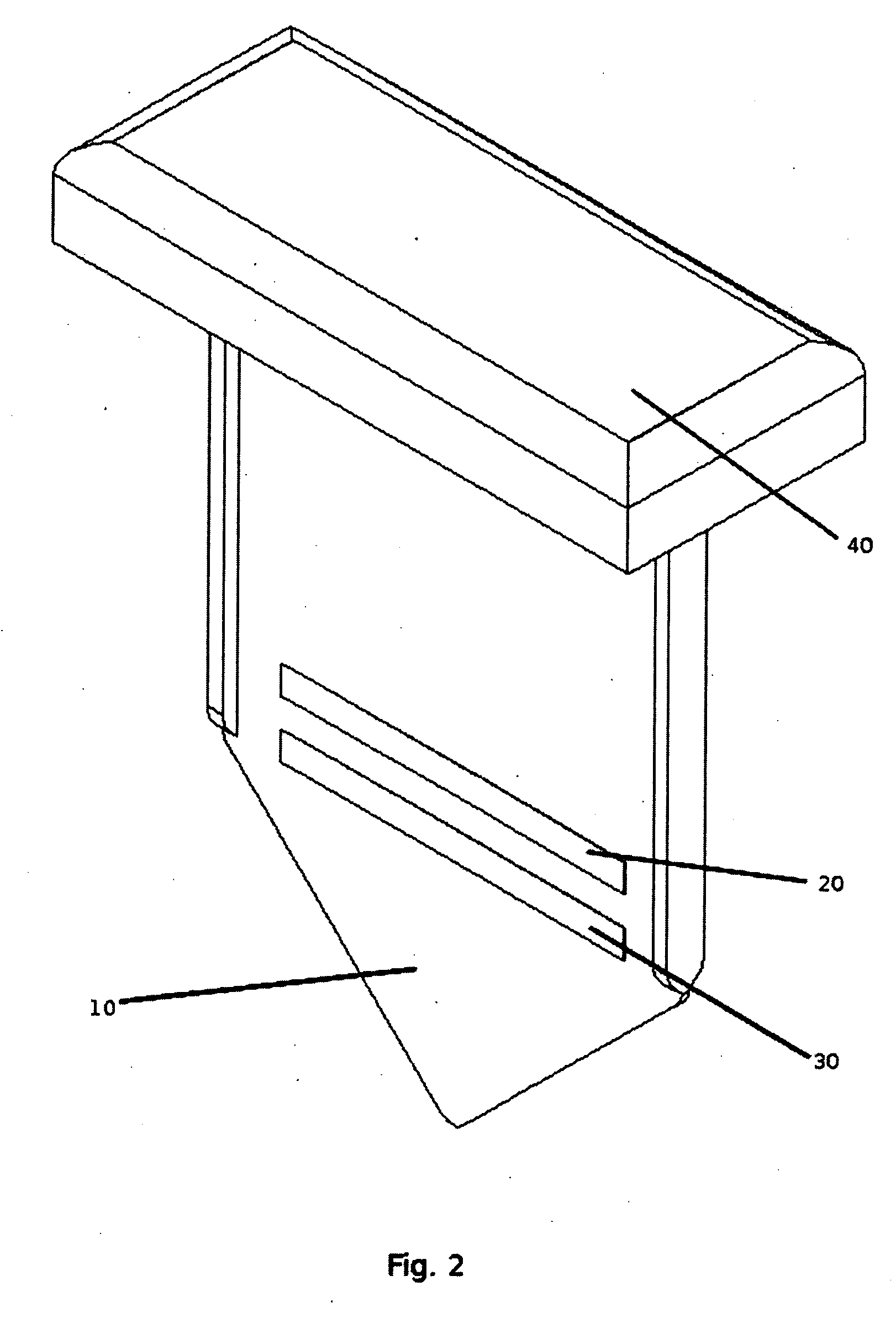Capacitive soil moisture sensor
a moisture sensor and capacitive technology, applied in watering devices, resistance/reactance/impedence, instruments, etc., can solve the problems of limited useful life, difficult installation and maintenance of sensors, and abundance of water, and achieve the effect of stable long-term us
- Summary
- Abstract
- Description
- Claims
- Application Information
AI Technical Summary
Benefits of technology
Problems solved by technology
Method used
Image
Examples
Embodiment Construction
[0025] The preferred embodiment of the present invention, as shown in FIG. 1 and FIG. 2, comprises of a body 10 which is made of a corrosion resistant and ultra-violet light resistant material such as fiber glass, polyurethane, ABS or similar. Body 10 is formed into a flat and thin sheet to allow easy insertion into the soil. Additional rib structures to act as stiffeners can be form as part of body 10 to prevent twisting and bending during the insertion process.
[0026] A plurality of conductive material is attached to body 10 to form a first electrode 20. A plurality of conductive material is similarly attached to body 10 to form a second electrode 30. The conductive material of first electrode 20 and second electrode 30 are preferably corrosive resistant metals such as gold or platinum, however due to the cost of such metals, other materials such as copper, bronze, zinc, nickel or similar can be used. Additionally conductive resins can be used in place of the metals.
[0027]FIG. 4 ...
PUM
 Login to View More
Login to View More Abstract
Description
Claims
Application Information
 Login to View More
Login to View More - R&D
- Intellectual Property
- Life Sciences
- Materials
- Tech Scout
- Unparalleled Data Quality
- Higher Quality Content
- 60% Fewer Hallucinations
Browse by: Latest US Patents, China's latest patents, Technical Efficacy Thesaurus, Application Domain, Technology Topic, Popular Technical Reports.
© 2025 PatSnap. All rights reserved.Legal|Privacy policy|Modern Slavery Act Transparency Statement|Sitemap|About US| Contact US: help@patsnap.com



